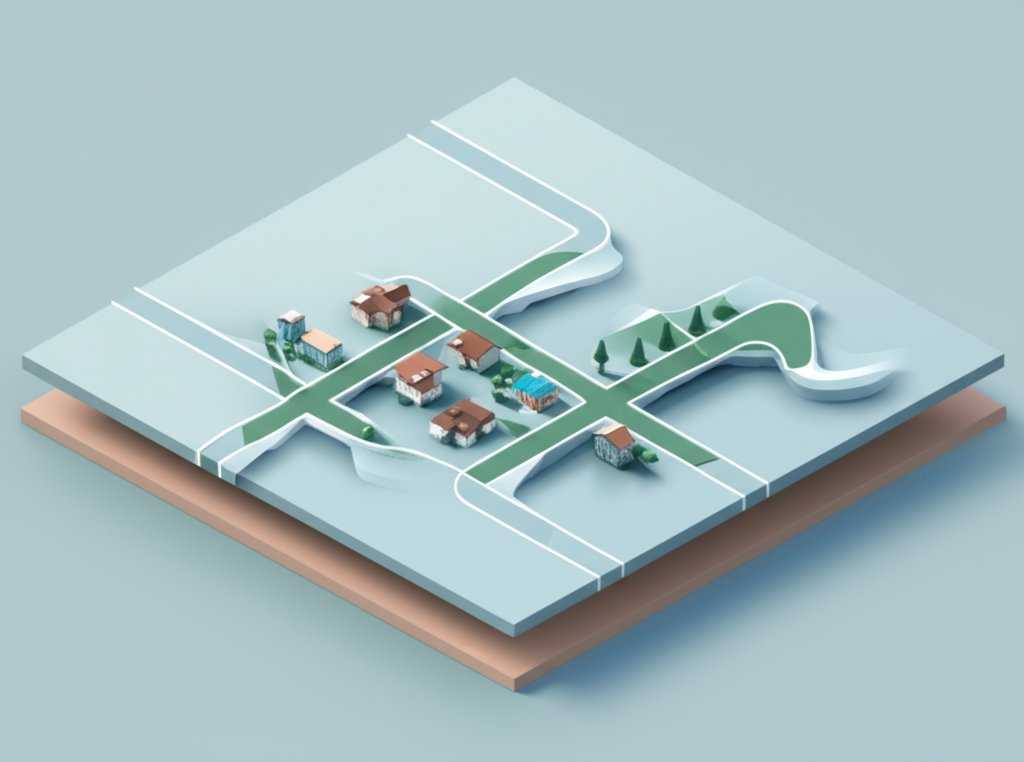Navigating the intricacies of property information can be challenging, whether you’re a homeowner, a prospective buyer, a developer, or a local government official. From understanding precise luzerne county property lines to exploring detailed luzerne county property maps, accurate geographic data is paramount. Fortunately, Luzerne County, Pennsylvania, offers a powerful Geographic Information System (GIS) that serves as an indispensable resource. This comprehensive guide will illuminate how to leverage the luzerne gis portal to access crucial parcel data, decipher property boundaries, locate luzerne county tax map information, and utilize its robust luzerne county parcel viewer functionality, empowering you with unparalleled location-based insights.
Understanding Luzerne County GIS: Your Gateway to Geographic Data

Geographic Information Systems (GIS) are sophisticated platforms designed to capture, store, manipulate, analyze, manage, and present all types of geographical data. For Luzerne County, this means a centralized, interactive database that brings together a wealth of information about its land and infrastructure.
What is GIS and Why is it Important for Luzerne County?
At its core, luzerne gis translates complex geographical data into accessible, visual maps. Instead of sifting through stacks of paper records, users can interact with digital maps that display layers of information simultaneously. For Luzerne County, a region rich in diverse landscapes and urban centers, GIS is vital for:
- Transparency: Providing public access to property information, fostering informed decision-making.
- Efficiency: Streamlining research for real estate, development, and environmental studies.
- Planning: Aiding local government in urban planning, zoning, and infrastructure development.
- Emergency Response: Enhancing preparedness and response by visualizing critical data during crises.
The Power of Geographic Information for Residents and Professionals
The luzerne gis platform offers a powerful array of insights beneficial to a wide audience. Residents can quickly look up details about their own property or others in their neighborhood, verifying luzerne county property lines or understanding zoning regulations. Professionals, from real estate agents and land surveyors to environmental consultants and utility companies, rely on this data for due diligence, project planning, and operational efficiency. The system aggregates everything from property ownership and parcel dimensions to natural features and infrastructure, making it a cornerstone for data-driven decisions within the county.
While the Luzerne GIS portal offers detailed local insights, remember that broader historical map collections, like those discussed regarding Gambara maps, can provide valuable context for understanding property evolution over time.
Accessing Luzerne County’s GIS: Free Online Portal vs. Subscription Services

Luzerne County understands the varied needs of its users, offering tiered access to its extensive GIS data, much like premium online services.
The Free Luzerne County Parcel Viewer: Essential Information at Your Fingertips
For the majority of users, the free online luzerne county parcel viewer is an invaluable tool. Accessible directly through the county’s official website, this portal provides fundamental property information without any cost. With just a few clicks, you can:
- Identify Property Ownership: Discover who owns a specific parcel of land.
- Visualize Property Boundaries: Clearly see
luzerne county property linesand dimensions. - Obtain Parcel Identification Numbers (PINs): Essential for various official documents and further research.
- View Basic Property Attributes: Access general information about over 165,000 properties within the county.
This free access eliminates the need for initial trips to the courthouse, making preliminary research and quick lookups incredibly convenient for casual users, homeowners, and those beginning their property investigations.
Unlocking Advanced Data: The Subscription GIS Portal
For those requiring a deeper dive into geographic data, Luzerne County offers a subscription GIS portal. This premium access unlocks enhanced datasets crucial for comprehensive analysis and specialized projects. Subscription tiers typically include daily, monthly, or annual options, catering to varying professional needs. This advanced access provides:
- Detailed Zoning Regulations: Understand specific land use classifications and development restrictions.
- Comprehensive Flood Maps: Identify properties located within designated flood zones, vital for insurance and development.
- Soil Composition Data: Access information on soil types, fertility, and suitability for various uses.
- Environmental Datasets: Layers focusing on wetlands, natural habitats, and other environmental factors.
- Utility Infrastructure: Information related to water, sewer, and other public utilities.
This level of detail is indispensable for professionals such as real estate developers, urban planners, land surveyors, civil engineers, and environmental consultants who require precise, layered data for informed decision-making and project execution. For specific pricing and access details, it is recommended to contact the Luzerne County GIS/Mapping Department directly.
How to Get Started: Navigating to the Official Resources
To begin your exploration of luzerne county property maps and data, navigate to the official Luzerne County website’s GIS/Mapping Department page. From there, you will typically find direct links to both the “Free Online GIS Portal” (often powered by Esri’s ArcGIS Web Application) and information regarding the “Subscription GIS Portal.” Always prioritize official county sources for the most accurate and up-to-date information.
Navigating the Luzerne County GIS Portal & Parcel Viewer
The luzerne county parcel viewer is designed for intuitive use, similar to popular online mapping services. Familiarizing yourself with its features will significantly enhance your property research efficiency.
Step-by-Step Guide to Finding Luzerne County Property Maps
Locating specific luzerne county property maps is straightforward:
- Access the Portal: Open the official Free Online GIS Portal from the Luzerne County GIS/Mapping Department webpage.
- Search Functionality: Use the search bar, typically located at the top or side of the map interface. You can search by:
- Address: Enter a street number and name (e.g., “200 N River Street”).
- Owner Name: Search by the property owner’s last name or full name.
- Parcel Identification Number (PIN): If you have the specific PIN, this is the most direct way to locate a parcel.
- Interactive Map Tools: Once a property is found, or if you’re browsing:
- Zoom and Pan: Use your mouse wheel or the on-screen controls to zoom in/out and pan across the map.
- Identify Tool: Click on a parcel to bring up a pop-up window displaying detailed property information, including ownership, acreage, and PIN.
- Layers Panel: This critical tool allows you to turn on or off various data layers, such as aerial photography, zoning districts, floodplains, and municipal boundaries, enriching your
luzerne county property mapsview.
Interpreting Property Lines and Parcel Data
When using the luzerne county parcel viewer, understanding what you’re seeing is key. Luzerne county property lines are typically depicted as clear boundaries outlining each parcel. These lines represent the legal limits of a property. The parcel data associated with each property will often include:
- Acreage/Lot Size: The total area of the property.
- Assessed Value: The county’s valuation of the property for tax purposes (often linked to the
luzerne county tax map). - Deed Book and Page Numbers: References to where the official deed is recorded.
- Municipality: The town, borough, or township where the property is located.
- Latest Sale Date/Price: Historical transaction information (where available).
Remember that GIS-drawn luzerne county property lines are for informational purposes and general visualization. For legally binding surveys or construction, always consult a licensed land surveyor.
Essential Tools for Your Search
Beyond basic navigation, the luzerne gis portal often includes helpful tools:
- Measurement Tools: Calculate distances and areas directly on the map.
- Print/Export Options: Generate high-quality
luzerne county property mapsfor your records or presentations. - Basemap Selector: Switch between different background maps, such as street maps, topographic maps, or satellite imagery, to suit your specific viewing needs.
- Street View Integration: Some portals may offer direct links to Google Street View for a ground-level perspective.
Unlocking Key Data: Property Lines, Maps, Parcels, and Tax Information
The true power of luzerne gis lies in its comprehensive data, critical for diverse applications.
Master Your Property: Detailed Luzerne County Property Lines and Boundaries
Understanding luzerne county property lines goes beyond just knowing where your fence should be. The GIS provides insights into:
- Official Boundaries: The surveyed perimeter of your property as recorded by the county.
- Setbacks: Minimum distances required between a structure and the property line.
- Easements: Rights held by others to use a portion of your property (e.g., utility easements, access easements).
- Right-of-Way: Public or private rights of passage over another’s land.
While the GIS offers a visual representation, for legal disputes or precise construction, a certified survey is irreplaceable. However, the GIS is your first stop for clear, accessible information.
Beyond Basic Outlines: Comprehensive Luzerne County Property Maps
The luzerne county property maps available through the GIS offer more than just parcel outlines. They are rich with layered information, including:
- Aerial Imagery: High-resolution satellite images that show current land use, buildings, and natural features. These are invaluable for understanding the context of a property.
- Topography: Contour lines indicating elevation changes, crucial for understanding drainage, potential flood risks, and construction planning.
- Historical Maps: Sometimes, portals may offer access to historical imagery or maps, showing how property and land use have changed over time.
- Street Networks: A clear depiction of roads, highways, and local streets, aiding in navigation and understanding accessibility.
Understanding Your Luzerne County Tax Map
The luzerne county tax map is a fundamental component of the GIS, directly linking property parcels to their assessment and taxation data. While the GIS provides the visual map, the county’s assessment database holds the detailed financial records. Through the luzerne county parcel viewer, you can often:
- Locate Assessed Value: See the property’s assessed value, which forms the basis for property taxes.
- Identify Tax Parcel Numbers: These numbers are unique identifiers used for all tax-related inquiries.
- View Property Classifications: Understand how a property is categorized for tax purposes (e.g., residential, commercial, agricultural).
For a complete breakdown of property tax obligations, including tax bills and payment history, users will typically need to consult the separate Luzerne County Tax Assessment Database or contact the Tax Assessment Office directly. The GIS acts as the visual gateway to this critical financial information.
Environmental and Zoning Overlays in Luzerne GIS
For any land use or development project, environmental and zoning data are non-negotiable. The luzerne gis provides crucial overlays:
- Flood Zone Delineations: Identifying areas susceptible to flooding, as defined by FEMA. This impacts insurance rates and development feasibility.
- Soil Data: Information on soil types, compaction, and suitability for septic systems, foundations, or agriculture.
- Zoning Districts: Clearly defined areas outlining permitted land uses (e.g., residential, commercial, industrial). This guides what can be built and how land can be utilized.
- Wetlands and Conservation Areas: Highlighting environmentally sensitive areas that may have development restrictions.
These overlays are invaluable for ensuring compliance with regulations, mitigating risks, and making environmentally responsible decisions.
Practical Applications: Who Benefits from Luzerne County GIS?
The versatility of the luzerne gis makes it a valuable tool for a diverse range of users.
Real Estate Professionals and Property Owners
- Buyers and Sellers: Quickly research potential properties, verify
luzerne county property lines, understand neighborhood zoning, and estimate property values. - Realtors: Generate detailed property reports for clients, analyze market trends, and identify suitable listings.
- Homeowners: Resolve boundary disputes, plan home additions (checking setbacks), or simply learn more about their property.
Developers, Planners, and Construction Crews
- Site Selection: Identify suitable parcels for new developments based on zoning, topography, and utility access.
- Permitting: Streamline the application process by having immediate access to necessary property data and regulations.
- Infrastructure Planning: Plan utility extensions, road improvements, and other public works projects with accurate geographical context.
- Environmental Impact Assessments: Leverage detailed environmental layers to assess potential impacts and ensure compliance.
Environmental Researchers and Land Managers
- Conservation Efforts: Map and analyze natural habitats, wetlands, and protected areas for conservation planning.
- Resource Management: Monitor land use changes, track deforestation or urban sprawl, and manage natural resources efficiently.
- Impact Studies: Conduct studies on environmental factors like water quality or soil erosion patterns.
Emergency Services and Public Safety
- Disaster Preparedness: Identify high-risk areas (e.g., flood zones), plan evacuation routes, and stage resources.
- Response Coordination: Quickly locate incident sites, assess surrounding infrastructure, and coordinate emergency personnel during crises.
- Public Safety: Map crime hotspots, analyze traffic patterns, and plan law enforcement patrols.
Beyond the Digital: Traditional Maps & Expert Assistance
While the online luzerne county parcel viewer offers unparalleled convenience, there are situations where traditional options or expert guidance are still beneficial.
Obtaining Physical Maps and Custom GIS Services
For those who prefer tangible references or require specialized mapping solutions, the Luzerne County GIS/Mapping Department often provides:
- Printed Maps: Physical copies of
luzerne county property mapsor specific geographic areas can be purchased. These are useful for field work, large-scale planning, or simply a non-digital view. - Aerial Photographs: High-resolution aerial images, often available as prints, offering a bird’s-eye view of properties and surrounding areas.
- Custom GIS Maps: For complex projects or unique requirements, the department can create tailored GIS maps, combining specific data layers and visualizations to meet individual needs, often for a fee.
Contact the department for details on available map types, sizes, and associated costs.
Contacting the Luzerne County GIS/Mapping Department
For any questions, advanced inquiries, or assistance navigating the luzerne gis system and accessing specialized datasets, the experts at the Luzerne County GIS/Mapping Department are your primary resource. They can provide clarification on data interpretation, guide you through subscription options, and offer support for complex queries.
Luzerne County GIS/Mapping Department
Luzerne County Courthouse
200 N River Street
Wilkes-Barre, PA 18711
Reaching out to them ensures you receive the most accurate, authoritative, and up-to-date information directly from the source.
Conclusion
The luzerne gis is an invaluable resource, putting a wealth of geographic and property-specific information at your fingertips. From exploring precise luzerne county property lines and detailed luzerne county property maps to identifying luzerne county tax map data and utilizing the user-friendly luzerne county parcel viewer, this system empowers residents and professionals alike. By understanding how to access its free and subscription-based services and leverage its diverse data layers, you can make more informed decisions, streamline your research, and unlock the full potential of Luzerne County’s geographic intelligence. Start exploring today and uncover the power of location data!
Frequently Asked Questions (FAQ)
How accurate are luzerne county property lines on the GIS portal?
The luzerne county property lines displayed on the GIS portal are based on official recorded documents and surveys. They are generally considered accurate for informational and planning purposes. However, for legal purposes, such as resolving boundary disputes or for precise construction planning, a professional land survey is always recommended as the definitive source.
Can I download luzerne county property maps?
Yes, the free luzerne county parcel viewer often provides options to print or export maps as images or PDFs. For more extensive data downloads or specific GIS formats (like shapefiles), these features are typically available through the subscription service or by contacting the Luzerne County GIS/Mapping Department directly, and may involve associated fees.
Is there a cost to use the luzerne county parcel viewer?
Luzerne County offers a free online luzerne county parcel viewer that provides essential property information such as ownership, boundaries, and Parcel Identification Numbers (PINs) at no cost. For access to enhanced datasets, such as detailed zoning, flood maps, or environmental data, a subscription service is available through daily, monthly, or annual plans.
How do I find my luzerne county tax map information?
You can find initial luzerne county tax map information, including assessed values and tax parcel numbers, by searching for your property on the luzerne county parcel viewer. For a full breakdown of tax history, current tax bills, and detailed assessment records, you will likely need to visit or contact the Luzerne County Tax Assessment Office or use their dedicated online assessment database, which is separate from the primary GIS portal.
What kind of data layers are available in luzerne gis?
The luzerne gis includes a wide array of data layers, such as property lines, parcel identification numbers, ownership information, aerial photography, municipal boundaries, zoning districts, flood zones, topographic contours, soil classifications, environmental features (e.g., wetlands), and sometimes even utility infrastructure or street networks. The specific layers available may vary between the free and subscription portals.
How often is the luzerne gis data updated?
The data within the luzerne gis is regularly updated, but the frequency can vary depending on the specific layer. Property ownership and parcel boundary information, for example, is updated periodically as new deeds and surveys are recorded. Environmental or zoning data may be updated as new regulations or studies emerge. For critical decisions, it’s always best to verify the “last updated” date of specific data layers within the portal or contact the GIS/Mapping Department for the most current information.
Can I use the GIS for legal purposes?
While the luzerne gis portal is an excellent resource for research, planning, and general information, it is not typically considered a legally binding document. Luzerne county property lines and other data presented are for informational purposes. For legal matters, such as property transactions, boundary disputes, or court proceedings, you should always rely on official recorded documents, certified surveys performed by a licensed professional, and legal counsel.











2 thoughts on “Luzerne County GIS: Property Maps, Lines & Parcels”
Comments are closed.